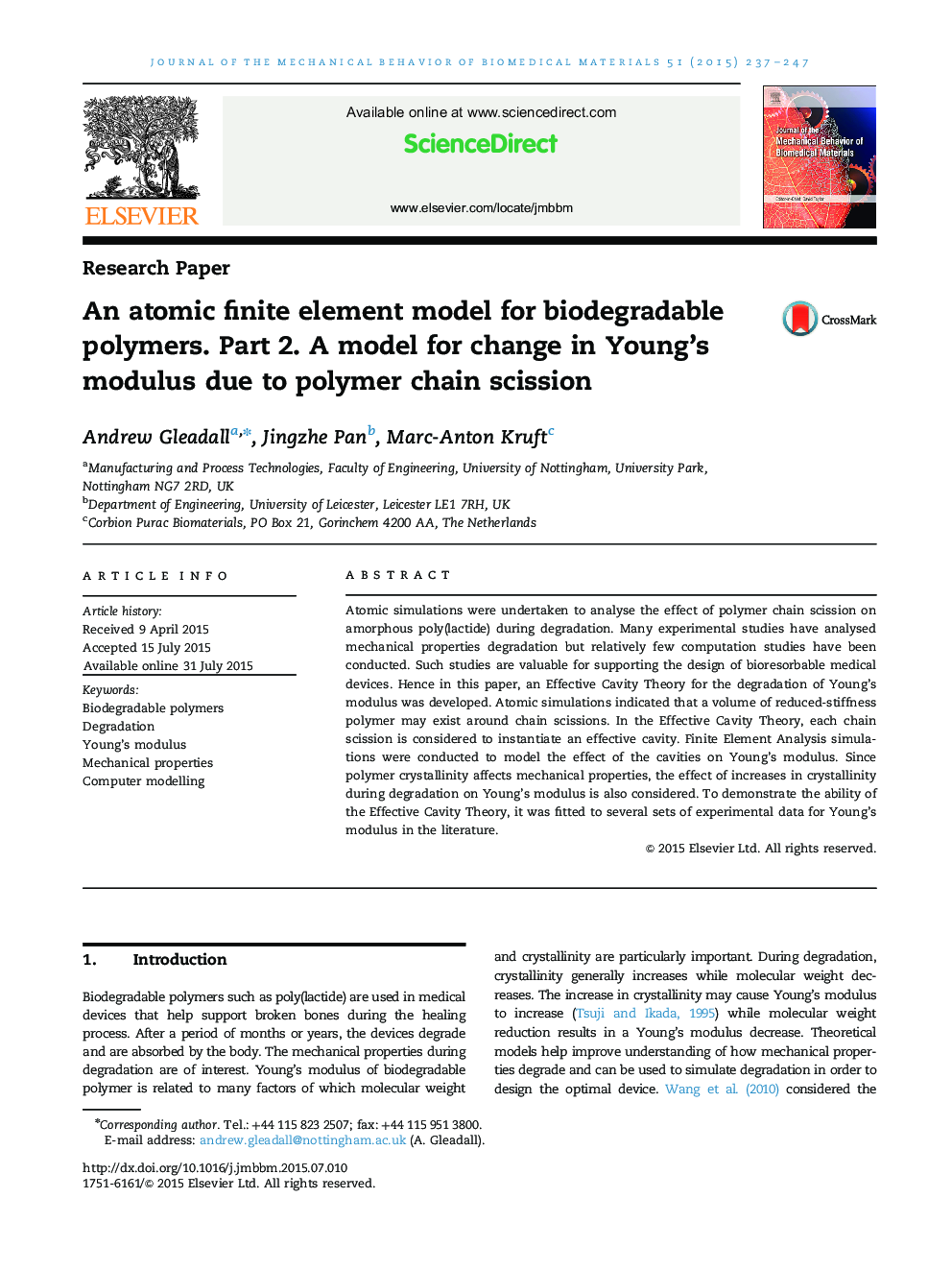| کد مقاله | کد نشریه | سال انتشار | مقاله انگلیسی | نسخه تمام متن |
|---|---|---|---|---|
| 810561 | 1469094 | 2015 | 11 صفحه PDF | دانلود رایگان |

• Atomic simulations of biodegradable polymer degradation are conducted.
• Chain scissions are found to instantiate effective cavities.
• Continuum mechanics simulations relate bulk Young’s modulus to chain scission.
• A numerical model for Young’s modulus degradation is developed.
• The model is able to capture experimental degradation trends.
Atomic simulations were undertaken to analyse the effect of polymer chain scission on amorphous poly(lactide) during degradation. Many experimental studies have analysed mechanical properties degradation but relatively few computation studies have been conducted. Such studies are valuable for supporting the design of bioresorbable medical devices. Hence in this paper, an Effective Cavity Theory for the degradation of Young’s modulus was developed. Atomic simulations indicated that a volume of reduced-stiffness polymer may exist around chain scissions. In the Effective Cavity Theory, each chain scission is considered to instantiate an effective cavity. Finite Element Analysis simulations were conducted to model the effect of the cavities on Young’s modulus. Since polymer crystallinity affects mechanical properties, the effect of increases in crystallinity during degradation on Young’s modulus is also considered. To demonstrate the ability of the Effective Cavity Theory, it was fitted to several sets of experimental data for Young’s modulus in the literature.
Figure optionsDownload high-quality image (225 K)Download as PowerPoint slide
Journal: Journal of the Mechanical Behavior of Biomedical Materials - Volume 51, November 2015, Pages 237–247